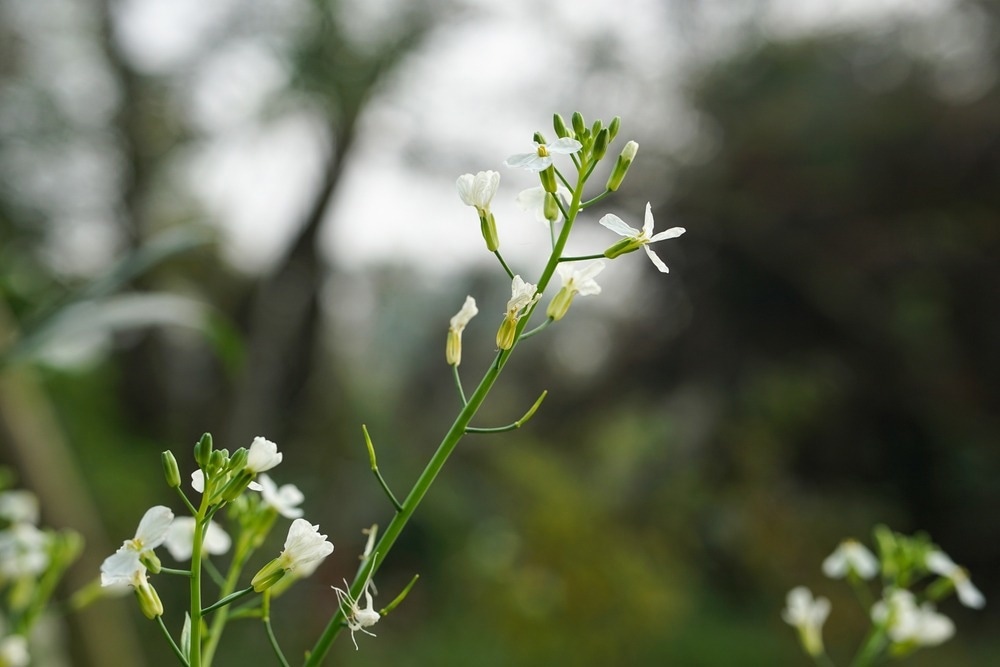Reviewed by Danielle Ellis, B.Sc.Dec 18 2023
Arabidopsis thaliana, a globally cultivated species for genetic research, achieved the milestone of being the first plant to undergo complete genome sequencing.
 Arabidopsis thaliana, known as Thale crest. Image Credit: Adobe Stock.
Arabidopsis thaliana, known as Thale crest. Image Credit: Adobe Stock.
The initial genome sequence, unveiled in 2000, had several gaps, which subsequent technological advancements systematically addressed. Gradually, all gaps were closed, leaving only two substantial undefined regions on chromosomes 2 and 4. These regions house gene clusters responsible for the replication of ribosomal RNAs in hundreds of copies, termed nucleolus organizer regions (NORs).
Defining NORs poses challenges not only in Arabidopsis but also in the genome sequences of nearly all eukaryotes, encompassing organisms with nuclei, such as humans. The persistent gaps in NORs have hindered comprehensive studies on these regions and the genes they harbor, which encode the RNAs of ribosomes—the essential protein-synthesizing machinery in all living cells.
The regulation of ribosomal RNA genes remains not fully elucidated. They are known to be subject to epigenetic control, allowing them to be activated or deactivated independently of their sequence. However, the precise mechanisms involved in this regulation are not entirely clear.
The misregulation of these genes is implicated in various cancers, prompting extensive biomedical research funding. This funding spans studies in diverse model organisms, including plants, yeast, fruit flies, mice, and others, to deepen our understanding of ribosomal RNA gene regulation.

Image Credit: Md Anik Sheikh/Shutterstock.com
A recent publication in Science Advances unveils the comprehensive sequences of the two Arabidopsis nucleolus organizer regions (NORs) and elucidates the distribution of active and silent ribosomal RNA genes within these regions.
The study, authored by postdoctoral researchers Dalen Fultz, Anastasia McKinlay, and Ramya Enganti in the laboratory of Craig S. Pikaard, an Investigator of the Howard Hughes Medical Institute and a Distinguished Professor, as well as the Carlos O. Miller Professor in the Departments of Biology and Molecular and Cellular Biochemistry at Indiana University Bloomington (IUB), builds upon earlier research from the same lab.
Previous investigations from the lab indicated the coexistence of active and silent subtypes of ribosomal RNA genes associated with different NORs, identified through genetic tests. The new study identifies over 70 distinct gene subtypes, characterized by subtle differences, located exclusively at NOR2 or NOR4 but not both.
Armed with the knowledge of the physical positions of these subtypes, the authors conducted tests to ascertain whether each subtype was activated to produce ribosomal RNA or deactivated.
Additionally, experiments were conducted on genetic mutants unable to silence their ribosomal RNA genes. The findings revealed that one NOR is almost entirely silenced in growing plants, while the other NOR is responsible for nearly all ribosomal RNA gene activity, particularly in its central region.
Regions of heightened gene activity were correlated with areas where DNA chemical modification, involving the addition of single carbon methyl groups, is low. These active regions also exhibited a tendency for neighboring genes to be of the same subtype.
These results offer an initial insight into the organization and regulation of ribosomal RNA genes within complete NORs. Given that NORs exhibit varying activity in other species, including humans and fruit flies, the plant-based findings have wide-ranging biomedical implications.
Moreover, this study lays the groundwork for future investigations in Arabidopsis, focusing on understanding NOR epigenetic control and evolution, especially the recently identified correlation between gene activity and gene subtype homogenization.
Source:
Journal reference:
Fultz, D., et al. (2023) Sequence and epigenetic landscapes of active and silent nucleolus organizer regions in Arabidopsis. Science Advances. doi.org/10.1126/sciadv.adj4509.